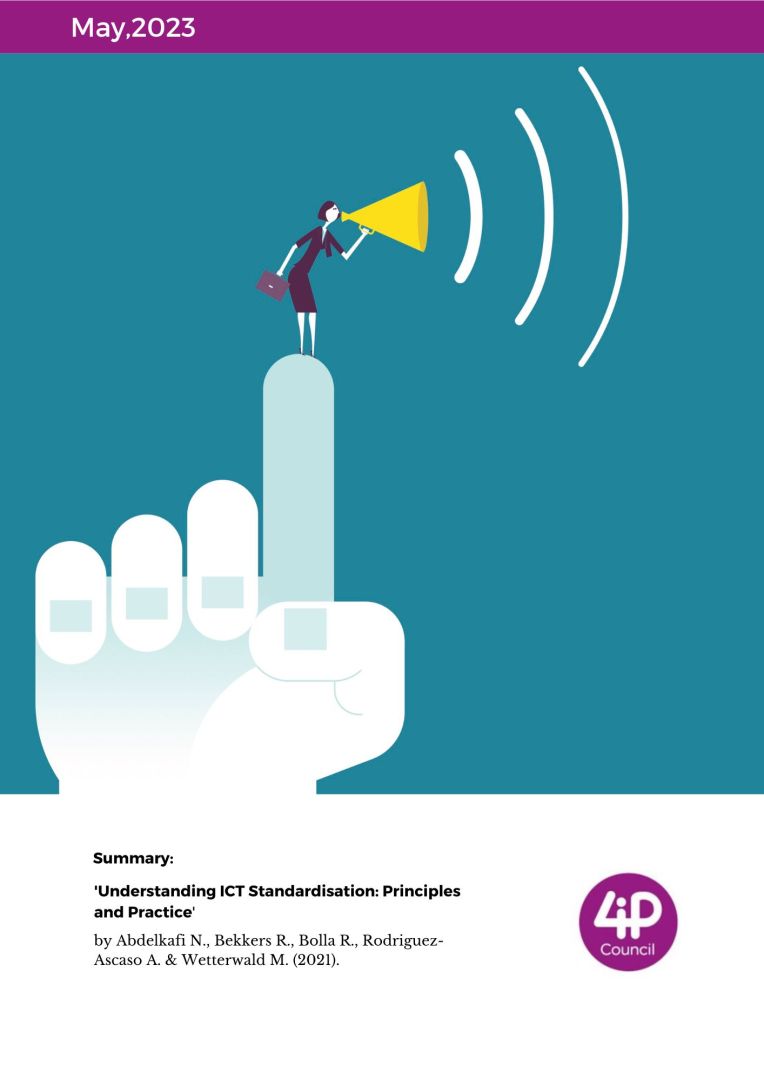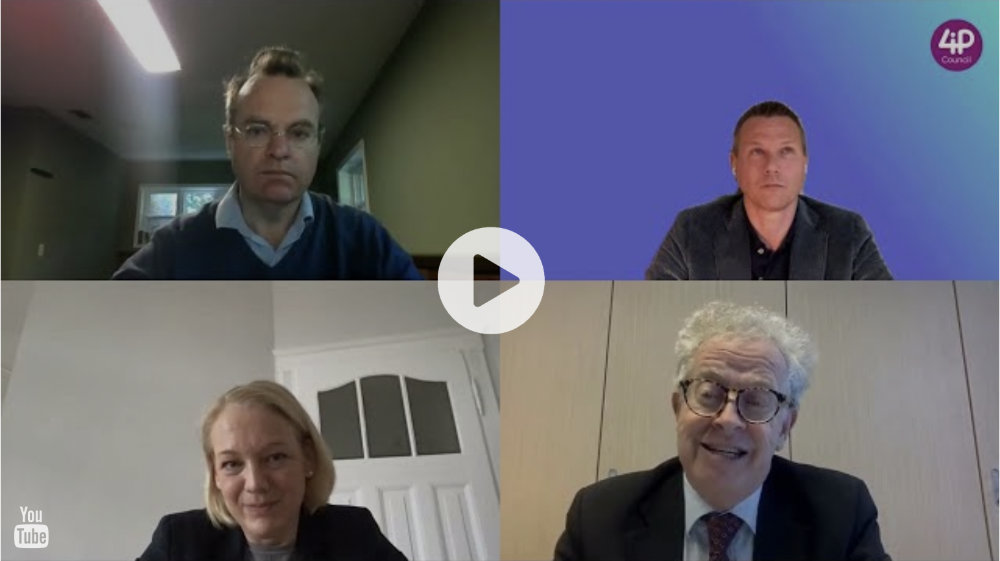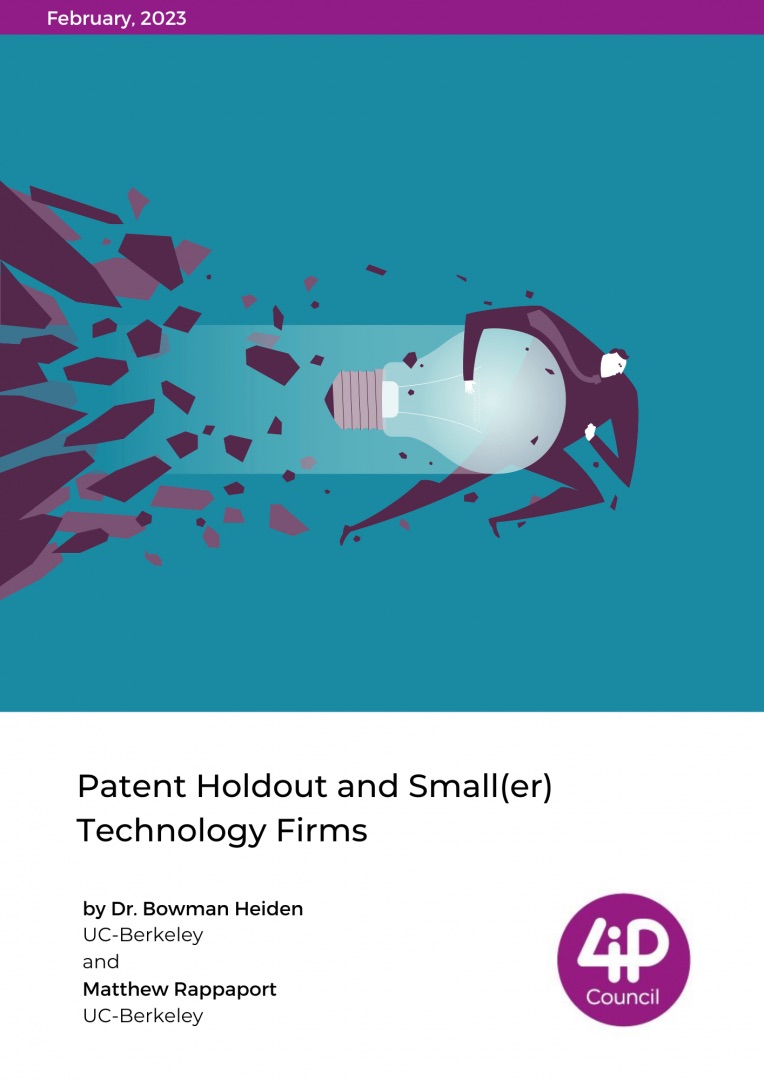Executive Summary
The Economic Impact of Patent Holdout
Bowman Heiden & Justus Baron
Highlights
· We define patent holdout as a transactional phenomenon linked to the rational behavior of firms to willfully infringe rather than seek to obtain a license, based on the risks and rewards of the given patent regime. Identifying patent holdout requires a frame of reference that assesses the reasonableness of the infringer’s behavior in light of industry context and prevailing norms.
· Following our definition of patent holdout, holdout only arises in situations where the patent owner is prepared to make licenses available on reasonable terms. Patent owners that commonly offer their patents for license, such as universities and other innovation specialists, and owners of patents subject to licensing commitments, such as declared Standard-Essential Patents, are at higher risk of holdout than companies relying on their patents to protect their exclusive own use of their patented technology.
· Patent holdout can impact Hybrid Operating Companies (HOPCOs), Non-Practicing Entities (NPEs), and Patent Assertion Entities (PAEs) leading to different business responses, including litigation, licensing or settling on inadequate terms, and abstaining from licensing. Thus, much of the impact of patent holdout is not easy to observe directly.
· Evidence of the impact of patent holdout was investigated using several methods:
o Evidence of systematic holdout in cellular standards
o Evidence of systematic patent holdout in PAE studies
o Evidence of systematic patent holdout from indicators of patent value
· Evidence of systematic holdout in cellular standards was investigated with the following results:
o The royalty gap analysis in cellular licensing produced a patent holdout range of $7-28 billion per year in 2021.
o An analysis of the institutionalization of patent holdout in the aggregate royalty base resulted in a total revenue base of $1,603 per year in comparison to the average smartphone cost of $392 per phone, suggesting a 4x higher royalty base in 2017.
o An analysis of the missing SEP market segments (i.e. the indemnification effect) whereby small implementers go unlicensed and small SEP holders are unable to collect royalties. The former effect was estimated between $600-1200 million per year in 2015.
· The evidence of patent holdout based on previous PAE studies was estimated at approximately $500 billion over the timeframe of 1990-2010.
· The analysis of systemic patent holdout from patent renewal data showed that while declared SEPs have historically been more valuable to their owners than other patents, more than half of this historical advantage has dissipated between 2006 and 2022. Over the same time period, patents first assigned to universities have similarly lost value compared to patents assigned to other organizations.
Overview
Patent holdup and holdout are related phenomena. Both strategies occur in a context in which patent owners seek to license their patents to potential licensees in exchange for royalty payments after infringing use of the patented technology has already begun and is facilitated by the cost and uncertainty of patent litigation. Under such conditions, prices in the product market may have formed without properly reflecting the value of the patented technology. Therefore, determining the amount of a reasonable compensation for the use of the patents may be inherently challenging. In practice, reasonable royalties are usually determined by reference to industry norms, which are reflected, in particular, in the terms of voluntarily concluded comparable licenses.
In the absence of readily available, external, and objective benchmarks for reasonable royalties, the licensing terms to which parties may agree in bilateral licensing negotiations often depend on the availability of remedies for patent infringement. In particular, holdup and holdout behavior are intrinsically related to the availability of remedies that deter the unauthorized use of patent technology through the threat of injunctive relief and enhanced damages. Such remedies can potentially create financial losses for infringing companies that are significantly larger than the value of the unlicensed use of the patented technology. In situations where such remedies are readily available, infringers may seek to settle their disputes with owners of infringed patents even at the cost of signing licenses on exorbitant terms, thus potentially rewarding and encouraging holdup strategies. In situations in which such remedies are never or only exceptionally available to patent owners seeking to license their patents to implementers, potential licensees may have little reason to fear patent litigation, and holdout may often be profitable for implementers.
The academic and policy discussion of holdup and holdout behavior has thus consistently been related to discussions of the availability of remedies for patent infringement. Especially in the U.S., there have been relatively clear historical trends regarding the ease of enforcing patent rights against infringers. For example, after the creation of a single appellate court for patent cases and other reforms facilitating patent enforcement in the early 1980s, the yearly number of patent applications surged, and an increasing number of companies relied on patent royalties for a significant share of their revenue.
While the licensing of patents to other companies for the generation of royalty revenue is not limited to any particular technological field or industry, the information and communication technology (ICT) sector has come to epitomize a certain model of patent licensing, in which patent owners seek to license their patents to potentially large numbers of companies that are already (allegedly) using their patented inventions, and where some product manufacturers face infringement allegations by larger numbers of owners of different, complementary patents. Some of these patents are essential to technology standards, meaning that any of the potentially thousands of users of such standards may be using the patented technology, and some such standards are subject to thousands of potentially complementary patents declared to be potentially standard-essential.[1]
However, starting in the late 1990s and early 2000s, a strand of literature on anticommons and patent thickets hypothesized that the growing number of patents in the biotech and I.T. industries was blocking and disincentivizing innovation. Companies that primarily or exclusively develop and patent their inventions for the purpose of licensing these patents to others, so-called "non-practicing entities" (NPEs), became a focus of this criticism, in particular, those actors that acquired and asserted patents from others, known as "patent assertion entities" (PAEs).
NPEs, often pejoratively referred to as "patent trolls", were portrayed as being particularly likely to benefit from the threat of litigation and potential injunctions to extract excessive royalties from operating companies. Patent holdup theory, combined with the rhetoric of patent trolls, paved the way for a series of judicial rulings and legislative reforms of the U.S. patent system over the past two decades. One of the most important tenets of this evolution is restrictions on the availability of remedies in equity, which disproportionately affected patent owners who are seeking to license their patents to other companies, such as most NPEs and owners of standard-essential patents (SEPs).
These developments, in essence, created two competing patent theories of market failure - one on the technology market (i.e. freeriding/patent holdout) and one on the product market (i.e. anticommons/patent holdup). As the need for markets for technology grows, so does the need to find the right balance of private and public ordering mechanisms to facilitate the formation of these markets and govern their operation. Empirical evidence of the position of the pendulum on the patent holdout/up spectrum is an important input to the governance process so as to both understand the current economic reality and the potential economic impact of potential changes in governance policy.
To date, no study has tried to measure the economic impact of patent holdout. This study makes a first attempt broken down into five sections, including (1) an introduction to patent holdout as the missing piece of the economic equation, (2) the theoretical foundations of patent holdout, (3) a typology of patent holdout contexts, impacts, and measurements, (4) evidence of the economic impact of patent holdout, and (5) a conclusion.
[1] Owners of such Standard-Essential Patents (SEP) usually commit to license such SEPs to standards implementers on reasonable and non-discriminatory terms – SEPs are thus a category of patents that are primarily used for licensing, rather than excluding competitors.







